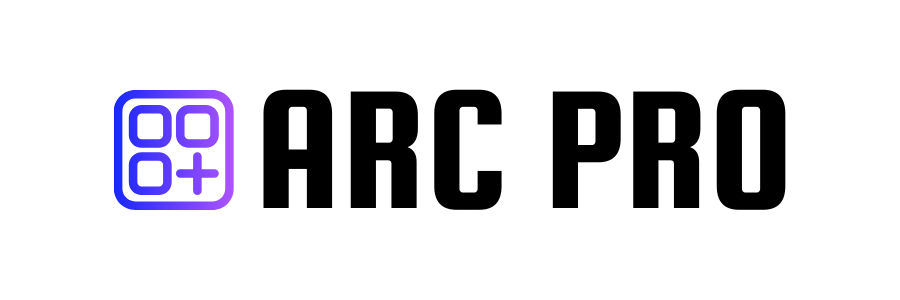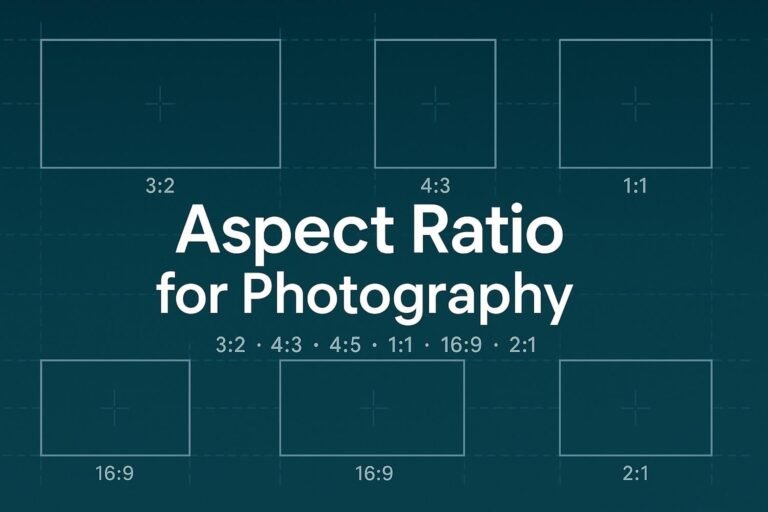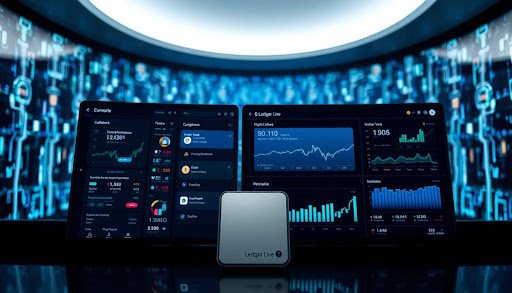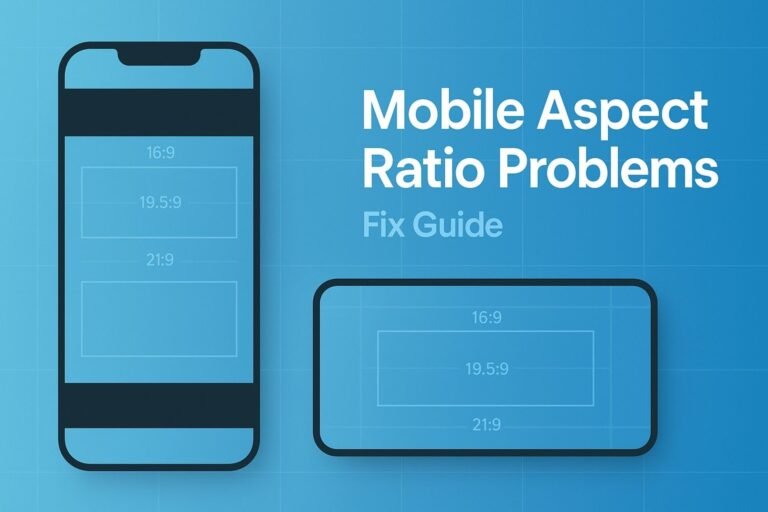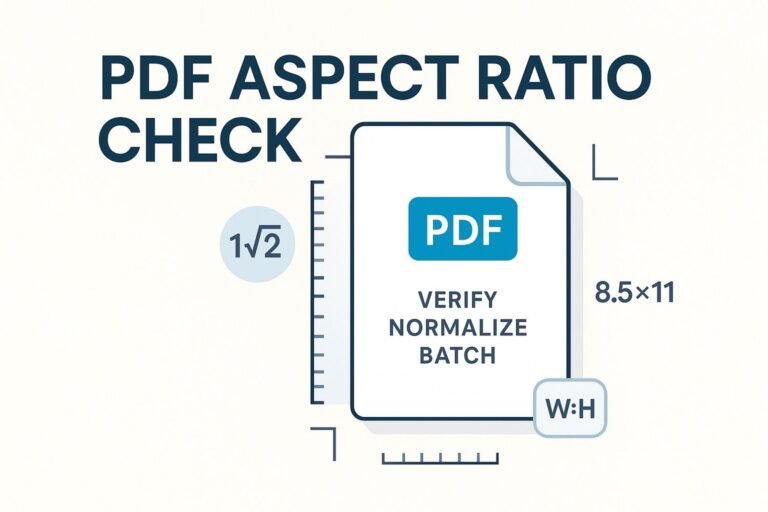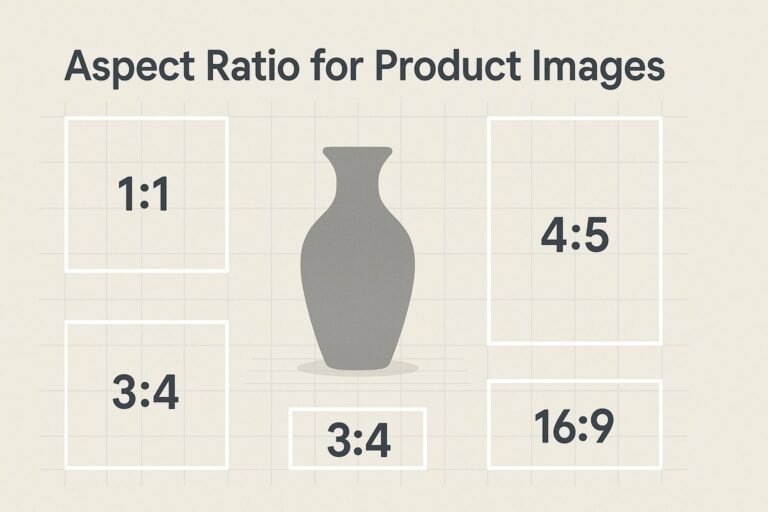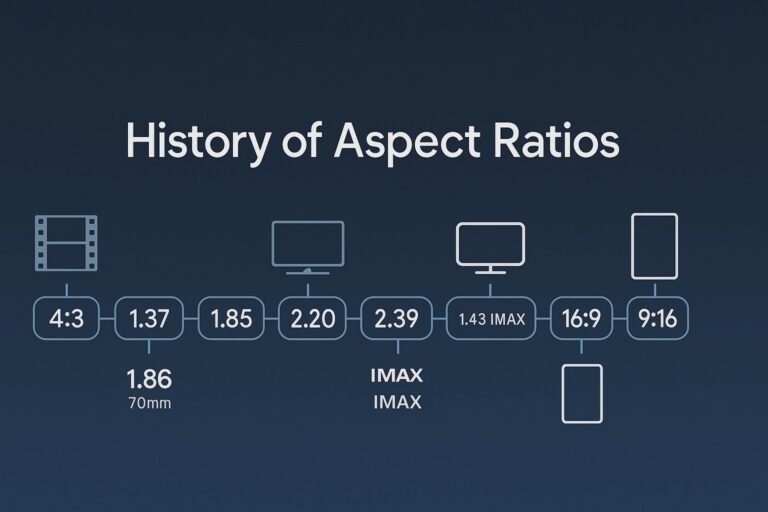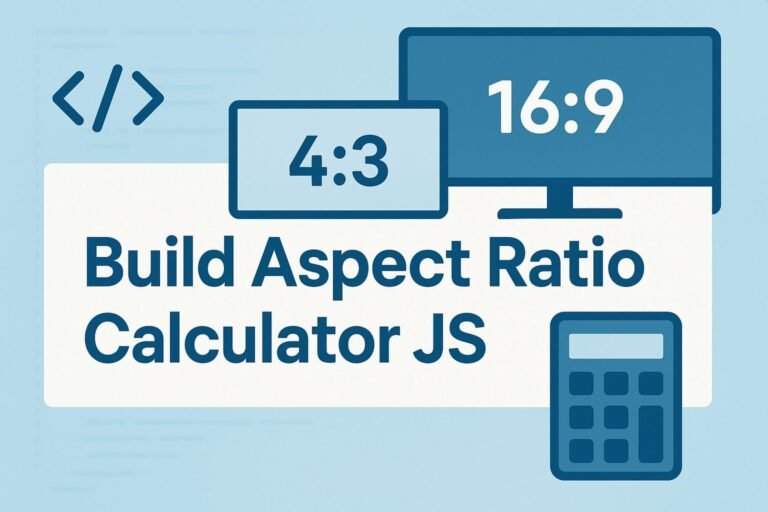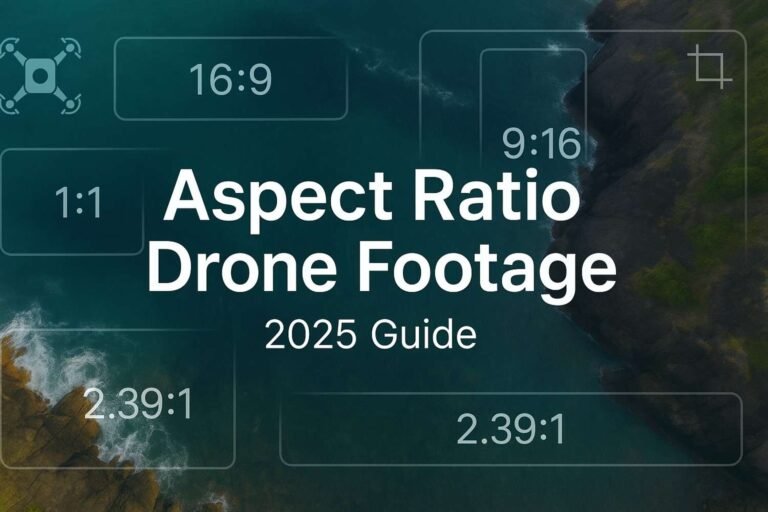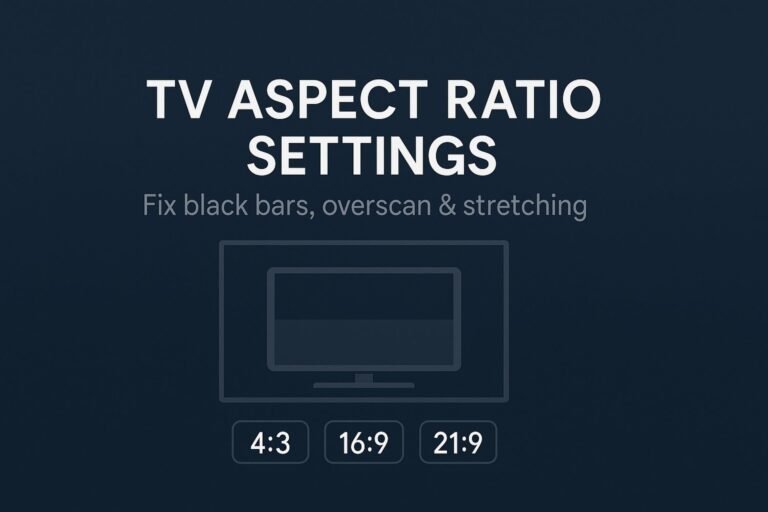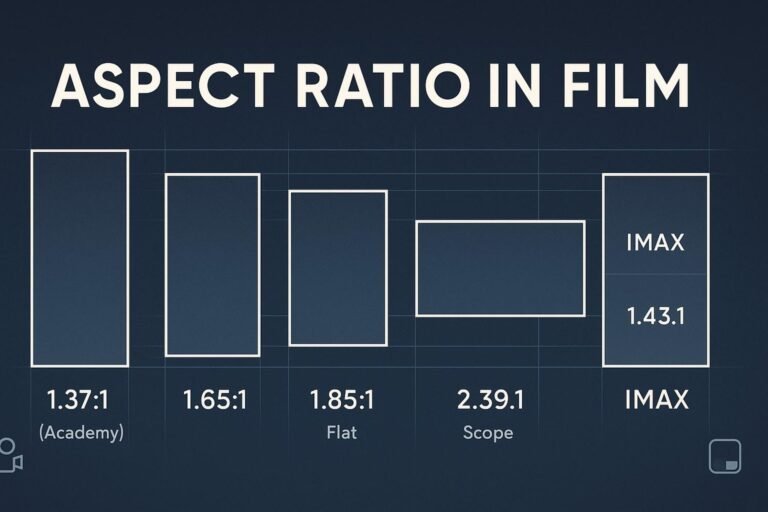TL;DR: Start with your camera’s native ratio—3:2 for most full-frame/APS-C or 4:3 for Micro Four Thirds and phones—then crop for the destination (print size or platform) and the story (portrait, landscape, product, etc.). For portraits on social, 4:5 is a winning vertical; for web banners and sweeping vistas, 16:9 or 2:1; for grids and product thumbnails, 1:1.
Use the free Aspect Ratio Calculator to convert sizes and lock proportions in seconds.
1) What is aspect ratio in photography?
Aspect ratio is the relationship of an image’s width:height. A 6000×4000px file simplifies to 3:2; 4000×3000px simplifies to 4:3. Beyond the math, your ratio frames the scene, guides composition, and determines whether prints or social crops will trim edges unexpectedly.
Common photo ratios & their decimals: 1:1 (1.00), 5:4 (1.25), 4:3 (1.33), 3:2 (1.50), 7:5 (1.40), 16:9 (1.78), 2:1 (2.00).
2) Native sensor ratios (and why they matter)
- Full-frame & APS-C: Native 3:2. In-camera 4:3/1:1/16:9 modes are crops of the sensor.
- Micro Four Thirds: Native 4:3. 3:2/16:9/1:1 are crops.
- Medium format: Often 4:3 or 3:2 depending on the back; some backs support 1:1.
- Smartphones: Highest-resolution photos are usually 4:3; switching to 16:9 commonly trims top/bottom.
Best practice: Shoot RAW at the native ratio to keep maximum pixels. Crop later for print or platform.
3) How to choose the right aspect ratio (30-second method)
- Pick the destination: Print (8×10? 5:4), Instagram feed (4:5), Stories/Reels (9:16), web hero (16:9 or 2:1).
- Match the subject/story:
- Portraits: 4:5 flattering and tall; 1:1 classic; 3:2 editorial.
- Landscapes: 3:2 balanced; 16:9/2:1 for breadth.
- Products/thumbnails: 1:1 for tidy grids; 4:3 adds breathing room.
- Architecture: 5:4/4:3 respect geometry and verticals.
- Compose with “safe margins”: Leave ~5–7% inside edges to protect against platform UI and lab trims.
4) Best aspect ratios by genre
| Genre | Recommended Ratios | Why It Works | When to Switch |
|---|---|---|---|
| Portraits (vertical) | 4:5, 3:2, 1:1 | 4:5 flatters full-length & half-body; 1:1 timeless; 3:2 editorial feel. | Need 8×10 prints (5:4) or maximum impact in IG feed → 4:5. |
| Landscapes | 3:2, 16:9, 2:1 | 3:2 balances sky/foreground; 16:9/2:1 emphasize horizons. | Scene reads wide, or you’re designing a site banner. |
| Street/Documentary | 3:2, 4:3 | Natural perspective; 4:3 offers extra vertical context. | Busy backgrounds need tighter vertical framing → 4:3. |
| Architecture/Interiors | 5:4, 4:3, 1:1 | Respects symmetry and vertical lines; gallery-friendly sizes. | Strong central motifs → try 1:1 for graphic impact. |
| Products/E-commerce | 1:1, 4:3 | Square grids consistently; 4:3 adds space for shadows/copy. | Marketplace requires square thumbnails → 1:1. |
| Wildlife/Sports | 3:2, 4:3, 16:9 | 3:2 frames motion; 16:9 leaves run-in/run-out space. | Subject needs breathing room along the action line → 16:9. |
| Macro/Floral | 4:3, 1:1 | Compact frames suit small subjects and clean bokeh. | Symmetry or square compositions → 1:1. |
5) Print sizes & lab-friendly cheat sheet
Align your capture/crop with intended prints to avoid unwanted trims at the lab.
| Aspect Ratio | Common Print Sizes (no crop) | Notes |
|---|---|---|
| 3:2 | 6×4, 9×6, 12×8, 18×12, 24×16 | Native for full-frame/APS-C; 8×10 (5:4) will crop the sides. |
| 4:3 | 8×6, 12×9, 16×12, 20×15 | Popular for MFT and phone files. |
| 5:4 (4:5) | 10×8, 20×16, 30×24 | Classic portrait & frame shop sizes. |
| 1:1 | 12×12, 20×20, 30×30 | Great for gallery walls & album covers. |
| 16:9 | 16×9, 32×18 | Cinematic feel; check frame availability. |
| 2:1 | 24×12, 36×18 | Order custom frames or mountings. |
Pro move: If you’ll print 8×10, compose slightly loose when shooting 3:2 so a 5:4 crop won’t cut off hands or hair.
6) Social & web output that performs
- Instagram feed: Portrait 4:5 (e.g., 1080×1350), Square 1:1 (1080×1080), Landscape ~1.91:1 (e.g., 1080×566).
- Stories/Reels/TikTok/Shorts: 9:16 (1080×1920).
- Web hero banners: 16:9 or 2:1 with a central safe area for headlines/buttons.
Keep faces and text inside a “safe zone” at least 5–7% from edges. Platform UI, captions, and buttons will cover the rest.
7) How aspect ratio changes composition
- 3:2 feels energetic and cinematic—great for leading lines and action.
- 4:3 is calmer/documentary—extra vertical space helps context.
- 5:4 elevates formal portraits/architecture—classic print heritage.
- 1:1 centers subjects—invites symmetry and bold negative space.
- 16:9 & 2:1 stretch the horizon—perfect for storytelling in one sweep.
8) Change aspect ratio without distortion (step-by-step)
You can’t add detail that isn’t there. To change aspect ratio you either crop (remove edges) or pad (letterbox/pillarbox with margins). Cropping keeps image quality but alters framing; padding preserves content but adds borders.
Keep proportions:
newHeight = (originalHeight / originalWidth) × newWidth
newWidth = (originalWidth / originalHeight) × newHeight
Reality check: Cropping 6000×4000 (24MP, 3:2) to square (1:1) yields 4000×4000 (16MP)—still plenty for large prints.
Skip the math with the Aspect Ratio Calculator—type any side, lock the ratio, and export matching dimensions.
9) Pro workflow tips (capture → edit → export)
- Decide the destination first. If it’s 8×10, plan a 5:4 crop at capture.
- Shoot RAW in native ratio. You can always crop later; in-camera 16:9 is just a crop.
- Bracket for crops. Make a tight frame and a slightly wider “safety” for alternate ratios.
- Use virtual copies. In Lightroom/C1, create multiple aspect-ratio versions without duplicating files.
- Export presets. Save presets for 4:5 (IG portrait), 1:1 (thumbs), 16:9 (web hero) to stay consistent.
10) FAQ
What’s the best aspect ratio for photography overall?
No single ratio wins every time. Start with your sensor’s native (3:2 or 4:3) for maximum pixels, then crop for the story, print size, or platform.
Why do my 8×10 prints cut off the sides?
8×10 is 5:4. If you shoot 3:2, you must crop width to fit 8×10. Compose looser or plan a 5:4 crop in post.
Is 16:9 good for still photos?
Yes—for wide vistas, panoramas, and web hero images. It’s less forgiving for portraits unless you use negative space intentionally.
Should I shoot 1:1 in camera?
Only if you’re certain. Shooting RAW at native ratio and cropping later keeps options (and pixels).
What aspect ratio is best for Instagram?
Portrait 4:5 performs well in the feed. Keep 1:1 for grids and 9:16 for Reels/Stories.
